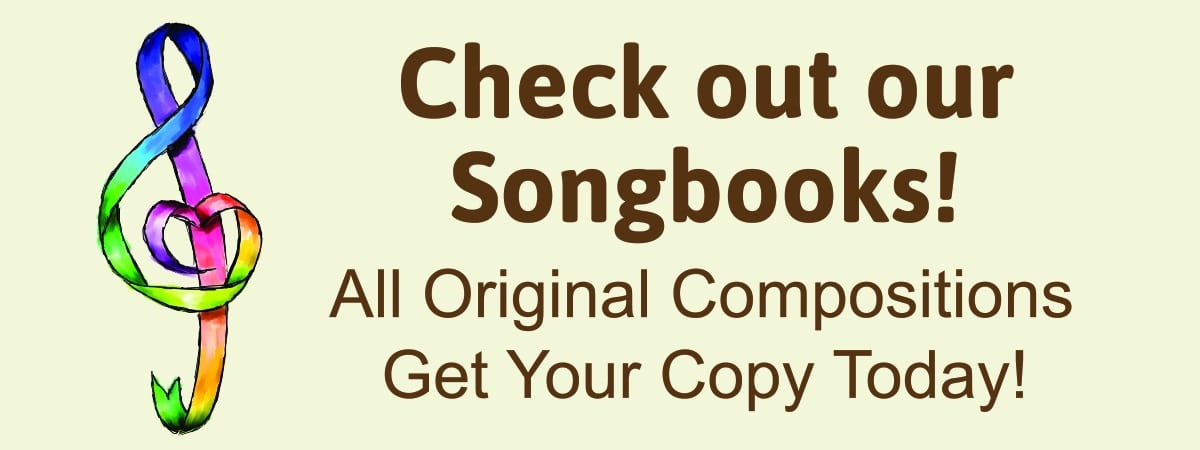Music Therapy is a systematic process of intervention wherein the therapist helps the client to promote health, using music experiences and the relationships that develop through them as dynamic forces of change.
— Dr. Kenneth Bruscia
For young children, music therapy provides opportunities for growth and development within an engaging and motivating musical experience.
For the families of young children, music therapy creates interactive experiences in which families learn and incorporate meaningful musical play into their lives.
The goals and outcomes of music therapy for young children are developmental and support healthy growth.
The music used in music therapy for young children is developmentally appropriate, dynamic and active.
Resources for Music Therapy in Early Childhood
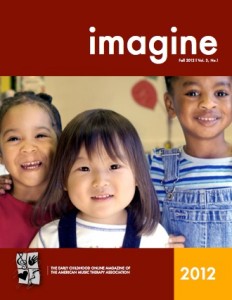
Imagine: The Early Childhood Online Magazine of the American Music Therapy Association
Published yearly in the fall and packed with up to date information on early childhood music therapy practice, research and resources from around the world.
http://www.musictherapy.org/events/earlychild/
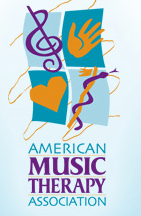
Music Therapy and Young Children Fact sheet published by the American Music Therapy Association and filled with useful information on music therapy and young children along with general information on music therapy and finding a music therapist.
http://www.musictherapy.org/assets/1/7/MT_Young_Children_2006.pdf
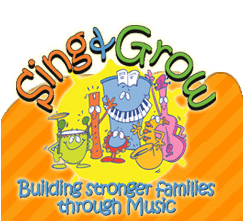
Sing & Grow, a music therapy based parent/child music program, began in Australia in 2001 and has spread to the United Kingdom and New Zealand. Funded originally by the Australian Government, the project focuses on improving outcomes for young children through prevention and early intervention work with families.
http://www.playgroupqueensland.com.au/what-is-playgroup/
Music therapy based parent/child music groups created to support child development through music.
www.earlychildhoodmusictherapy.org
Resources for Early Childhood Development

The National Association for the Education of Young Children (NAEYC) is the world’s largest organization working on behalf of young children. NAEYC sponsors conferences, professional development, program accreditation, advocacy and numerous publications including: Young Children http://www.naeyc.org/yc/ ;
Teaching Young Children http://www.naeyc.org/tyc/ ;
Early Childhood Research Quarterly http://www.naeyc.org/publications/ecrq;
and Voices of Practitioners: Teacher Research in Early Childhood Education http://www.naeyc.org/publications/vop.
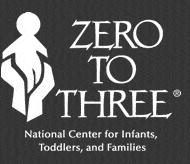
ZERO TO THREE is a national, nonprofit organization that informs, trains, and supports professionals, policymakers, and parents in their efforts to improve the lives of infants and toddlers.
![]()
The National Institute of Child Health & Human Development was initially established to investigate the broad aspects of human development as a means of understanding developmental disabilities, including intellectual and developmental disabilities, and the events that occur during pregnancy. Today, the Institute conducts and supports research on all stages of human development, from preconception to adulthood, to better understand the health of children, adults, families, and communities.
Resources for Music and Young Children

The mission of the National Association for Music Education is to advance music education by encouraging the study and making of music by all. To read the NAFME position statement on early childhood music education, go to http://www.nafme.org/about/position-statements/early-childhood-education-position-statement/early-childhood-education/.
![]()
The Early Childhood Music and Movement Association seeks to promote developmentally appropriate practices for all early childhood music and movement specialists, positively impacting the lives of all children.

The International Society for Music Education (ISME) believes that lived experiences of music, in all their many aspects, are a vital part of the life of all people. ISME’s mission is to enhance those experiences by: building and maintaining a worldwide community of music educators characterized by mutual respect and support; fostering global intercultural understanding and cooperation among the world’s music educators; and promoting music education for people of all ages in all relevant situations throughout the world.
Information about Music Therapy and Young Children
Abad, V. & Edwards, J. (2004). Strengthening families: A role for music therapy in contributing to family centered care. Australian Journal of Music Therapy. 15, pg. 3.
Betts. S. (2011). Attachment –based music therapy: New opportunities and requirements for music therapists working with young children. Imagine: Early Childhood Music Therapy Newsletter. Vol.2 No. 1.
Drake, T. (2008) Back to basics: Community-based music therapy for vulnerable young children and their parents. In A. Oldfield and C. Flower (eds.) Music therapy with Children and their Families. Jessica Kingsley Publishers, pp. 37-51.
Humpal, M.E. & Tweedle, R. (2006). Learning through play- A method for reaching young children. In M.Humpal & C.
Colwell (Eds.). Effective Clinical Practice in Music Therapy: Early Childhood and School Age Educational Settings (pp.153-173). Silver Spring, MD:American Music Therapy Association.
Kaplan, R.S. (2006). Step by step: A Hierarchical approach to group music therapy intervention in preschool settings. In M.Humpal & C. Colwell (Eds.). Effective Clinical Practice in Music Therapy: Early Childhood and School Age Educational Settings (pp.97-109). Silver Spring, MD:American Music Therapy Association.
Kern, P. (2004). Making friends in music: Including children with autism in an interactive play setting. Music Therapy Today, 5(4), 1-43.
Kern, P., Wolery, M., & Aldridge, D. (2007). Use of songs to promote independence in morning greeting routines for young children with autism.
Journal of Autism and Developmental Disorders, 37, 1264-1271.
Nicholson, J.M., Berthelsen, D., Abad, V., Williams, K., & Bradley, J. (2008) Impact of music therapy to promote positive parenting and child development. Journal of Health Psychology 13:226.
Oldfield, A. (2008) ‘Providing Support and Working in Partnership; Music Therapy with Pre-school Children and their Parents at a Child Development Centre’ in A. Oldfield and C. Flower (eds.) Music therapy with Children and their Families. Jessica Kingsley Publishers, pp. 19-36.
Oldfield, A. and Flower, C. eds. (2008) Music Therapy with Children and their Families. Jessica Kingsley Publishers
Oldfield, A. (2006) Interactive music therapy, a positive approach – music therapy at a child development centre. London: Jessica Kingsley.
Register, D. (2001). The effects of an early intervention music curriculum on prereading/writing. Journal of Music Therapy, 38(3), 239-248.
Register, D., & Humpal, M. (2007). Using musical transitions in early childhood classrooms: Three case examples. Music Therapy Perspectives, 25(1), 25-31.
Schwartz, E. (2006). Eligibility and legal aspects. In M.Humpal & C. Colwell (Eds.). Effective Clinical Practice in Music Therapy: Early Childhood and School Age ducational Settings (pp.27 – 36). Silver Spring, MD:American Music Therapy Association.
Schwartz, E. (2008). Music, Therapy, and Early Childhood: A Developmental Approach. Gilsum, N.H.: Barcelona Publishers.
Schwartz, E.K. (2009). In the beginning: Music therapy in early intervention groups. Imagine: Early Childhood Music Therapy Newsletter. Vol. 15. Silver Spring, MD: American Music Therapy Association.
Schwartz, E.K. (2011). Growing up in music: A Journey through early childhood music development in music therapy.
Developments in Music Therapy Practice: Case Study Perspectives. (Meadows, Ed.). Gilsum, New Hampshire. Barcelona Publishers.
Shoemark, H. (1996). Family-centered early intervention: Music therapy in the playgroup program. Australian Journal of Music Therapy. 7 p.3.
Simpson, J. (2011). Inclusion of Music Therapy in Early Intervention Programs. imagine, 2(1), 14 — 15.
Skewes, K. & Thompson, G. (1998). The use of musical interactions to develop social skills in early intervention. Australian Journal of Music Therapy. 9. Pg. 35.
Standley, J.M. & Hughes, J.E. (1996). Documenting developmentally appropriate objectives and benefits of a music therapy program for early intervention: A behavioral analysis. Music Therapy Perspectives. Vol.14.Pp. 87-94.
Standley, J.M., Walworth, D. & Nguyen, J. (2009). Effect of parent/child group music activities on toddler development: A pilot study. Music Therapy Perspectives.27 (1) pg. 11.
Warren, P. & Nugent, N. (2010). The Music Connections programme: Parent’s perceptions of their children’s involvement in music therapy. New Zealand Journal of Music Therapy.2010 8 Pg 8-33.
Walworth, D. D. (2009). Effects of Developmental Music Groups for Parents and Premature or Typical Infants Under Two Years on Parental Responsiveness and Infant Social Development. Journal of Music Therapy, 46(1), 32-52.
Walworth, D.D. (2009). Bright start music: Connecting the dots for infants and tots: An infant/ toddler developmental learning curriculum. Imagine: Early Childhood Music Therapy Newsletter. Vol. 15. Silver Spring, MD: American Music Therapy Association.
Wellman, R. (2010). Augmentative communication and assistive technology in early childhood music therapy. Imagine: Early Childhood Music Therapy Newsletter. Vol.1 No. 1. Silver Spring, MD: American Music Therapy Association.
Music Therapy in Early Childhood Songbooks and Practice Resources
Kern, P. & Snell, A.M. (2007). Volume1 Songbook: Songs & Laughter on the Playground. USA: De La Vista Publisher.
Schwartz, E. (2012). You and Me Makes We: A Growing Together Songbook. Melrose, MA. The Center for Early Childhood Music Therapy.
Shaw, J. & Manthey, C. (1996). Musical Bridges: Intergenerational Music Programs. St. Louis. MO: MMB Music, Inc.
Information about Music and Young Children
Feierabend, J. (2000). First Steps in Music for Infants and Toddlers. Chicago: GIA Publications.
Flohr, J. (2010). Best practices for young children’s music education: Guidance from brain research. General Music Today.23 (2) pp.13-19.
Gooding, L. & Standley, J. (2011). Musical development and learning characteristics of students: A compilation of key points from the research literature organized by age. Applications of Research in Music Education, 30 (1), 32-45.
Gordon, E. E. (2003). A Music Learning Theory for Newborn and Young Children. Chicago: GIA Publications, Inc. (Originally published 1997).
Kenney, S. (2008). Birth to six: Music behaviors and how to nurture them. General Music Today.22; P.32
LaGasse, B. (2011). Research snapshot 2011: Music and early childhood development. Imagine: Early Childhood Music Therapy Newsletter. Vol.2 (1). Silver Spring, MD: American Music Therapy Association.
McDonald, D. T., & Simons, G. M. (1989). Musical Growth and Development: Birth through Six. New York: Schirmer Books.
Schwartz, E. (2008). Music, Therapy, and Early Childhood: A Developmental Approach. Gilsum, N.H.: Barcelona Publishers.
Trehub, S.E. (2003). The developmental origins of musicality. Nature Neuroscience, 6: 669-673.
Trollinger, V.L. (2010). The brain in singing and language. General Music Today.23 (20).
Wilson, F. R., & Roehmann, F. L. (Eds.). (1990). Music and Child Development. St. Louis, MO: MMB Music, Inc.

